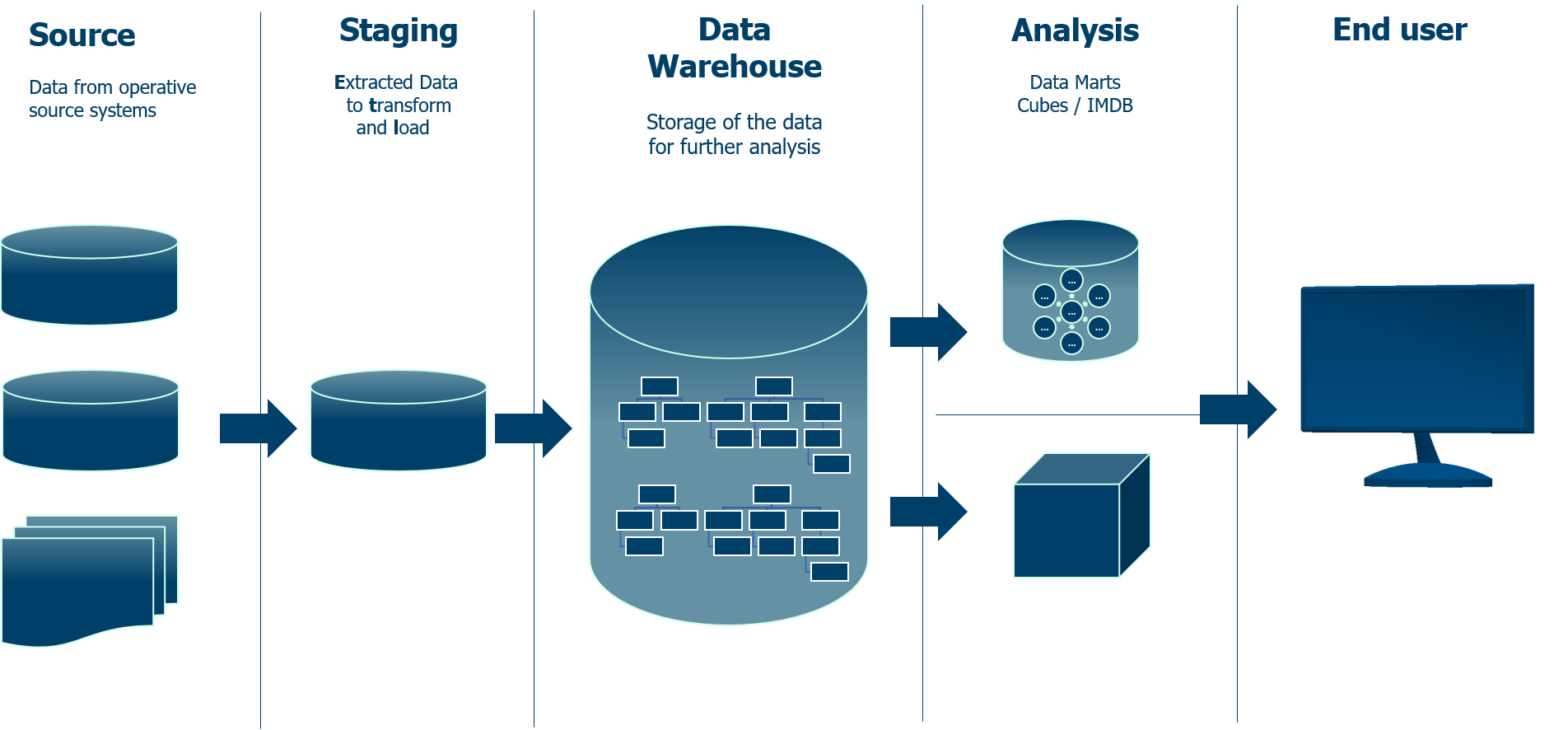
Data Warehouse Designs
Faster and more cost-effectively to relevant data and new information –
implement, optimise and consolidate data warehouse designs with DATA MART Consulting.
Experience shows that in the reality of a project there is no “one” right approach. This is why DATA MART Consulting combines the architectures and methods of modelling to suit customer requirements as best practice.
The following three approaches serve as a basis:
Data Warehouse Architecture according to Ralph Kimball
Corporate Information Factory (CIF) according to Bill Inmon and
Data Vault 2.0 according Daniel Linstedt
The architectures developed by Bill Inmon and Ralph Kimball propagate a company-wide data warehouse as the basis of a Business Intelligence system. The data warehouse consists of the layers: Staging, data warehouse and analysis to prepare and make available relevant data for the end user.
Kimball‘s architecture already provides for the data warehouse layer in dimensional form (Star Scheme and Snowflakes), while Inmon’s architecture depicts it in the third normal form. Strictly speaking, the data warehouse layer Kimball uses already consists of 1 to n department-specific data marts that the end user accesses. An additional analysis layer is only necessary if the use of cubes is considered.
Kimball’s architectural model
Inmon‘s model provides for an analysis layer in multidimensional form (Star Scheme and Snowflakes) based on Data Marts and Cubes for access by the user.
Inmon’s architectural model

Data Vault 2.0 by Daniel Linstedt focusses on the flexibility of the data model. The architecture is comparable to Bill Inmon’s approach, but differs in the structure of the data warehouse by a separation into a raw vault and a business vault.
Data Vault 2.0 architectural model

The flexibility of the data model is achieved by dividing the data into three table types:
This makes it easier to make changes, since no adjustments are made to existing tables. In the case of extensions, new hubs, satellites and links are added with largely standardised and automated processes.
Comprehensive comparison of the different architectural approaches:

DATA MART Consulting offers you professional and competent advice based on years of experience in all areas of Data Warehousing in order to guarantee fast and cost-effective access to relevant data and information.